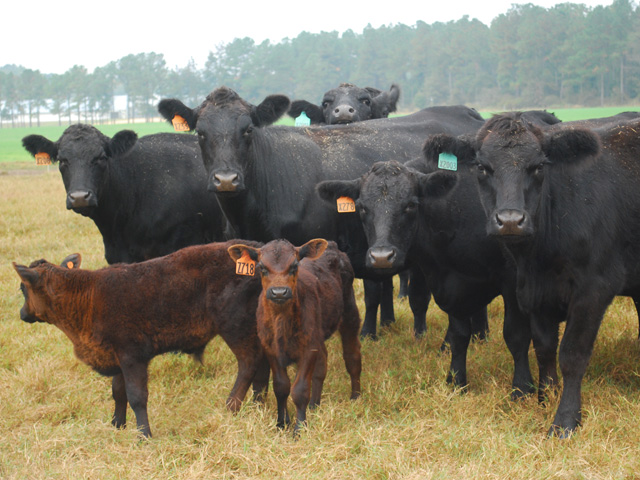Which Signs Show a Cow is in Labor
Watch for Three Stages of Labor and Delivery in the Cow Herd
Calving season can be stressful even for the most experienced producers. Often, it's unclear when a cow in labor needs help. The decision to intervene or not can be the difference between a live calf on the ground and a lost calf.
Alabama veterinarian Ken McMillan, a DTN contributing editor, has some timely pointers to help producers know what to watch for as cows go into labor and delivery this season.
1. Make a checklist. A mental, or even better, a physical, checklist of cows and heifers close to calving will be a valuable help in the busy days ahead to make sure nothing is overlooked.
2. Look for signs labor is near. Physical signs leading up to calving include udder development, relaxation and swelling of the vulva (known as "springing"), and a thick mucus discharge from the vulva. In some cows, relaxation of pelvic ligaments and strutting of teats can be observed 24 hours prior to labor. Cows tend to separate themselves from the herd as labor approaches.
P[L1] D[0x0] M[300x250] OOP[F] ADUNIT[] T[]
3. Check cows in labor frequently. For cows, the rule of thumb is to check those in labor three times a day. For heifers, it should be four times a day. It's important to track progress when a cow or heifer goes into labor. All calving pastures should have access to a working facility in the event you need to help.
4. Labor stage one. This is the preparatory stage when contractions begin. The cow or heifer will get up and down often, and she will appear uncomfortable. This stage should last two to six hours. It ends with emergence of fetal membranes or the water bag.
5. Labor stage two. This is the delivery stage. Contractions are very strong, and the cow or heifer is often lying on her side. Fetal membranes, and then the calf, enter the birth canal. A normal presentation is when both front feet of the calf emerge first. They will go in and out several times before the calf's head emerges. Continuous progress should be made. This stage should last no longer than 30 minutes to one hour in a cow; less than two hours in a heifer. Labor that exceeds this, or an abnormal presentation of the calf, is a reason to intervene.
6. Labor stage three. This is the cleanup stage. The uterus continues to contract, and the placenta is passed usually within three to eight hours. If the placenta does not pass within 24 hours, it is considered to be a "retained placenta." Consult with your veterinarian if this is the case.
7. When it's time to help. When labor has gone on too long, or there is an abnormal presentation of the calf, try to get the cow or heifer to a working facility. This is safer for the animal and the humans trying to help her. McMillan said that based on his experience, try to avoid tying the cow or heifer to a tree while she is trying to deliver. He noted this can cause a dam to abandon the calf.
8. Call your herd veterinarian. Unless you are completely comfortable with your ability to quickly and safely deliver the calf, call your herd veterinarian for guidance before you start.
Victoria Myers can be reached at vicki.myers@dtn.com
Follow her on Twitter @myersPF
(c) Copyright 2021 DTN, LLC. All rights reserved.






